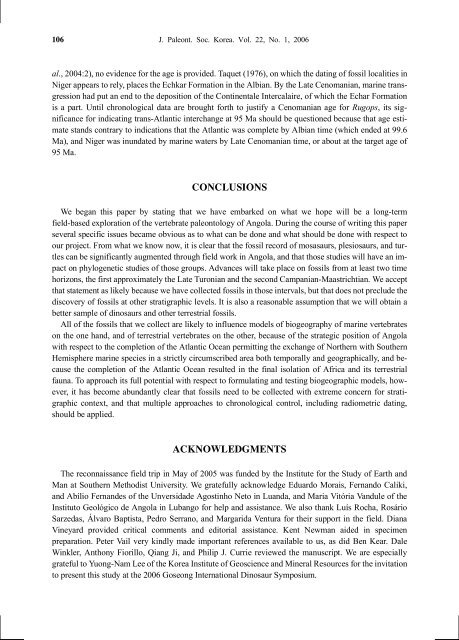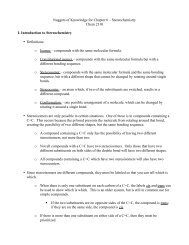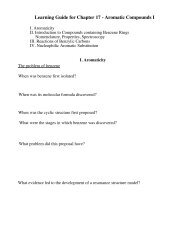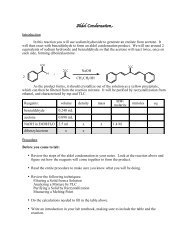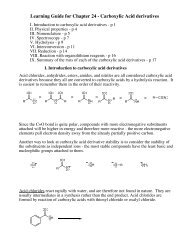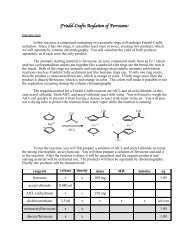the occurrence and geological setting of cretaceous dinosaurs
the occurrence and geological setting of cretaceous dinosaurs
the occurrence and geological setting of cretaceous dinosaurs
- No tags were found...
Create successful ePaper yourself
Turn your PDF publications into a flip-book with our unique Google optimized e-Paper software.
J. Paleont. Soc. Korea. Vol. 22, No. 1, 2006al., 2004:2), no evidence for <strong>the</strong> age is provided. Taquet (1976), on which <strong>the</strong> dating <strong>of</strong> fossil localities inNiger appears to rely, places <strong>the</strong> Echkar Formation in <strong>the</strong> Albian. By <strong>the</strong> Late Cenomanian, marine transgressionhad put an end to <strong>the</strong> deposition <strong>of</strong> <strong>the</strong> Continentale Intercalaire, <strong>of</strong> which <strong>the</strong> Echar Formationis a part. Until chronological data are brought forth to justify a Cenomanian age for Rugops, its significancefor indicating trans-Atlantic interchange at 95 Ma should be questioned because that age estimatest<strong>and</strong>s contrary to indications that <strong>the</strong> Atlantic was complete by Albian time (which ended at 99.6Ma), <strong>and</strong> Niger was inundated by marine waters by Late Cenomanian time, or about at <strong>the</strong> target age <strong>of</strong>95 Ma.We began this paper by stating that we have embarked on what we hope will be a long-termfield-based exploration <strong>of</strong> <strong>the</strong> vertebrate paleontology <strong>of</strong> Angola. During <strong>the</strong> course <strong>of</strong> writing this paperseveral specific issues became obvious as to what can be done <strong>and</strong> what should be done with respect toour project. From what we know now, it is clear that <strong>the</strong> fossil record <strong>of</strong> mosasaurs, plesiosaurs, <strong>and</strong> turtlescan be significantly augmented through field work in Angola, <strong>and</strong> that those studies will have an impacton phylogenetic studies <strong>of</strong> those groups. Advances will take place on fossils from at least two timehorizons, <strong>the</strong> first approximately <strong>the</strong> Late Turonian <strong>and</strong> <strong>the</strong> second Campanian-Maastrichtian. We acceptthat statement as likely because we have collected fossils in those intervals, but that does not preclude <strong>the</strong>discovery <strong>of</strong> fossils at o<strong>the</strong>r stratigraphic levels. It is also a reasonable assumption that we will obtain abetter sample <strong>of</strong> <strong>dinosaurs</strong> <strong>and</strong> o<strong>the</strong>r terrestrial fossils.All <strong>of</strong> <strong>the</strong> fossils that we collect are likely to influence models <strong>of</strong> biogeography <strong>of</strong> marine vertebrateson <strong>the</strong> one h<strong>and</strong>, <strong>and</strong> <strong>of</strong> terrestrial vertebrates on <strong>the</strong> o<strong>the</strong>r, because <strong>of</strong> <strong>the</strong> strategic position <strong>of</strong> Angolawith respect to <strong>the</strong> completion <strong>of</strong> <strong>the</strong> Atlantic Ocean permitting <strong>the</strong> exchange <strong>of</strong> Nor<strong>the</strong>rn with Sou<strong>the</strong>rnHemisphere marine species in a strictly circumscribed area both temporally <strong>and</strong> geographically, <strong>and</strong> because<strong>the</strong> completion <strong>of</strong> <strong>the</strong> Atlantic Ocean resulted in <strong>the</strong> final isolation <strong>of</strong> Africa <strong>and</strong> its terrestrialfauna. To approach its full potential with respect to formulating <strong>and</strong> testing biogeographic models, however,it has become abundantly clear that fossils need to be collected with extreme concern for stratigraphiccontext, <strong>and</strong> that multiple approaches to chronological control, including radiometric dating,should be applied.The reconnaissance field trip in May <strong>of</strong> 2005 was funded by <strong>the</strong> Institute for <strong>the</strong> Study <strong>of</strong> Earth <strong>and</strong>Man at Sou<strong>the</strong>rn Methodist University. We gratefully acknowledge Eduardo Morais, Fern<strong>and</strong>o Caliki,<strong>and</strong> Abílio Fern<strong>and</strong>es <strong>of</strong> <strong>the</strong> Unversidade Agostinho Neto in Lu<strong>and</strong>a, <strong>and</strong> Maria Vitória V<strong>and</strong>ule <strong>of</strong> <strong>the</strong>Instituto Geológico de Angola in Lubango for help <strong>and</strong> assistance. We also thank Luís Rocha, RosárioSarzedas, Álvaro Baptista, Pedro Serrano, <strong>and</strong> Margarida Ventura for <strong>the</strong>ir support in <strong>the</strong> field. DianaVineyard provided critical comments <strong>and</strong> editorial assistance. Kent Newman aided in specimenpreparation. Peter Vail very kindly made important references available to us, as did Ben Kear. DaleWinkler, Anthony Fiorillo, Qiang Ji, <strong>and</strong> Philip J. Currie reviewed <strong>the</strong> manuscript. We are especiallygrateful to Yuong-Nam Lee <strong>of</strong> <strong>the</strong> Korea Institute <strong>of</strong> Geoscience <strong>and</strong> Mineral Resources for <strong>the</strong> invitationto present this study at <strong>the</strong> 2006 Goseong International Dinosaur Symposium.


